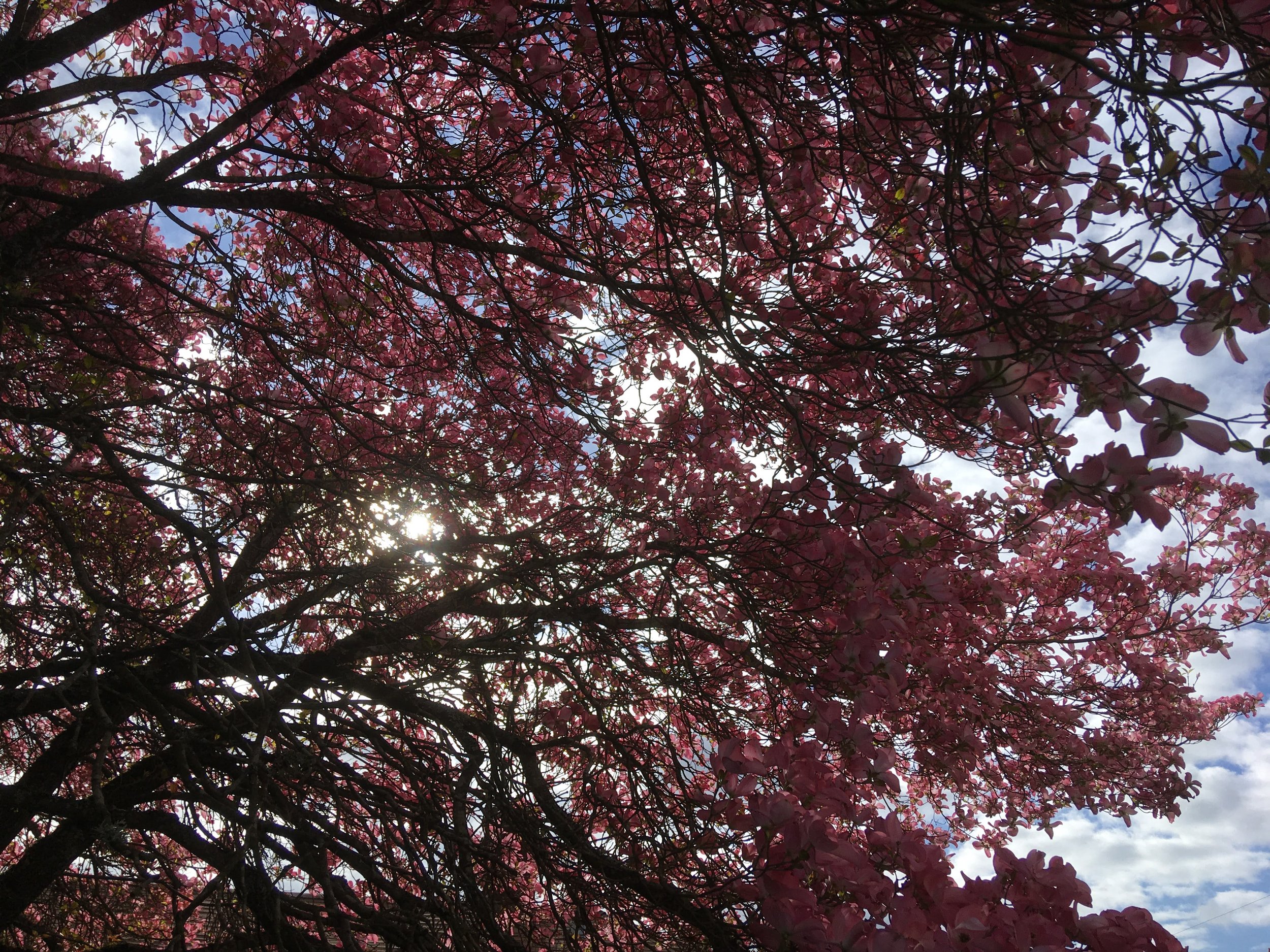Spring to Winter
Here in the Pacific Northwest, Winter will not seem to let go of us just yet. Flowers, bushes, and trees have been blooming steadily, taking their turns as usual, some having already dropped their petals and just coming into, or still awaiting, their moments of glory. But the wind, the thick gunmetal gray clouds and their legions of rain, and the air, cold as any February or March day… these persist, and persevere, and seem to rule the day, most days, despite whatever show the flowers may want to put on or love songs the birds may want to sing.
It’s been a struggle to endure this cold. More often than I care to admit, I find myself complaining about it, hating it, wanting to escape its gloom and constriction. Mostly because I feel that Winter “should be over,” as if I have any say in the matter. That I should be able to enjoy some sunshine, trade the heavy coat for short-sleeves, open the windows in the afternoon. Pleading my case to some notion of what the weather “should be” now that we’re in May, and what I “should feel”— even entitled to feel, as laughable as that is— given what I, what we all, have endured.
As with so much during this pandemic, the visceral reality also holds a powerful metaphor within.
Our perspective on the notion that “the pandemic is over” reflects how close, how intimate, we are with the poor and marginalized, with vulnerability, with suffering. This pandemic is not “over,” despite how much one may want to be “done with it.” Even if, as seems to be happening, it is shifting from headline news in the U.S. to the middle and back pages— along with malnutrition, ethnic conflict, preventable illnesses, and the other tragedies the Global West considers acceptable inhabitants of the Global South (but which had damn well better not camp out in its own backyard)— this virus is not done teaching us its lessons, and we ignore it, we will or delude ourselves into feeling “done,” at our own peril.
In its brilliant yet tragically clumsy way, the virus has been desperately trying to teach us how to live together more harmoniously, more sustainably, before we utterly destroy each other and Mother Earth (not necessarily in that order), choosing as its instrument the most visceral, fundamental thing we share: our breath. Yes, some important, groundbreaking progress has been made, some healing and corrections have taken place, and thank God for them. But we still have miles to go. Ed Yong of The Atlantic recently reported on how clueless, and frankly indifferent, to the point of malice— many US citizens are about matters of public health, as opposed to individual health. (NPR amplified his piece by publishing his interview front and center on Morning Edition last week. But unfortunately, using the term “Americans,” which utterly ignores hundreds of millions in the other countries of North, Central, and South America… and ironically, demonstrates exactly how deeply-mired mainstream culture is in the very problem they bring to light.) Not surprisingly, if sadly, the degree of privilege largely determined the degree of ignorance and indifference. And just about anywhere in this mess you dive into the details—say U.S. teenage mental health, as The New York Times has recently, in a vital series, “Inner Pandemic,” by Matt Richtel and Annie Flanagan— you quickly see this ignorance and indifference reflected in political will, public spending, and systemic justice.
We can’t turn away yet, brothers and sisters. If we do, we risk essentially traipsing on the graves of all those who have died from COVID, ignoring the suffering of those who have lost physical, mental, or spiritual health, gas lighting those who’ve lost jobs or relationships or anything else that was precious. We have to hang in there longer, help each other have the courage to endure the grieving, and learn to live with a broken heart. And we must practice patient perseverance, since this is no quick fix. We must help each other take the real, genuine time our hearts need— the time our hearts tell us we need, if we listen closely— to heal, individually and collectively. We’re being given a chance to re-learn how to live; we might not get such a chance again.
As we endure the long pilgrimage, we of course look for what will sustain us, signs of light or scents of nourishment. For me, blessed relief came last week, twice in fact, when we had forecast-defying sunshine on both my birthday and Mothers’ Day. On both days, I was lucky enough to get outside and give thanks for the sun, even if the air remained cold. I took a long birthday walk in the forest, marveling at trees and birds and streams, drinking in the quiet. And, per her request, worked in the yard with my wife and son, digging into the soil and planting strawberries, tomatoes, peppers, and greens. I felt glad to be alive, glad to walk and work, glad to have Nature so close to remind me, viscerally, of the deep hope that its Spring regeneration announces. And to feel invited to hope, with my still-broken heart, along with it.
And so perhaps this timid Spring is a painful gift for me, a thorn to bring me back to my knees, to the mercy, providence, and companionship of the Creator. A call to listen again deeply, as tired as I might feel, to my neighbors— to those in Ukraine, in the Global South, in my neighborhood where too many still lack enough to eat— and follow my still-broken, still-healing heart.
On this pilgrimage of life we are promised nothing, except the chance to walk, to share life together. I hope to walk humbly, with my God, loving tenderly, working fiercely, embracing sunlight and shadow, Winter and Spring.

